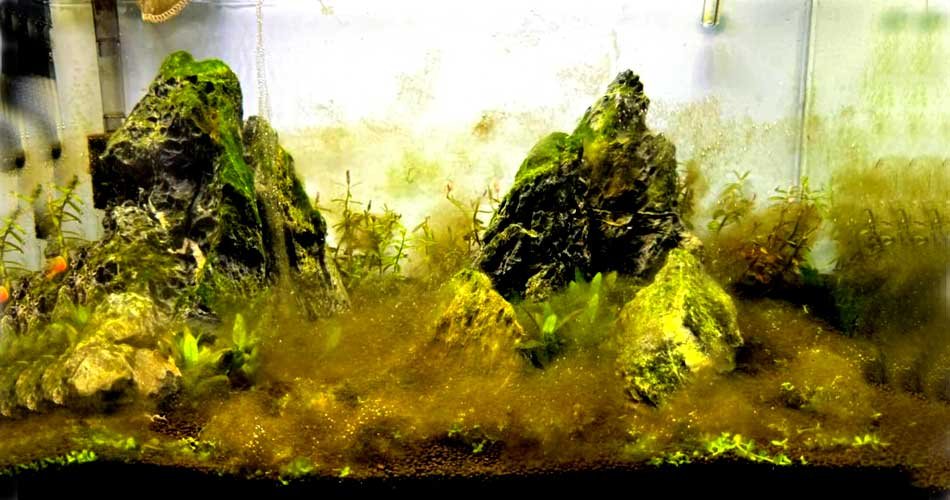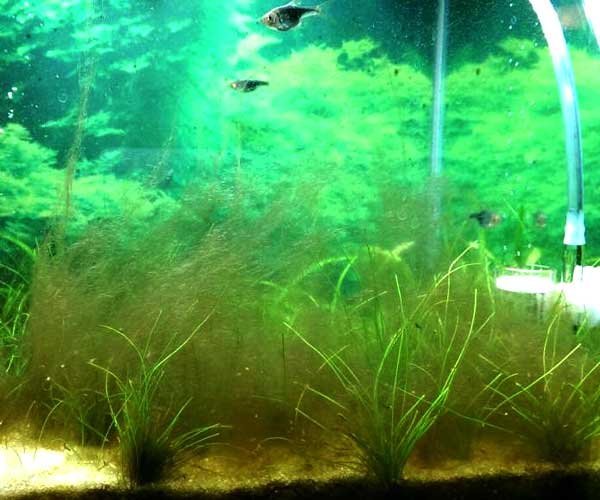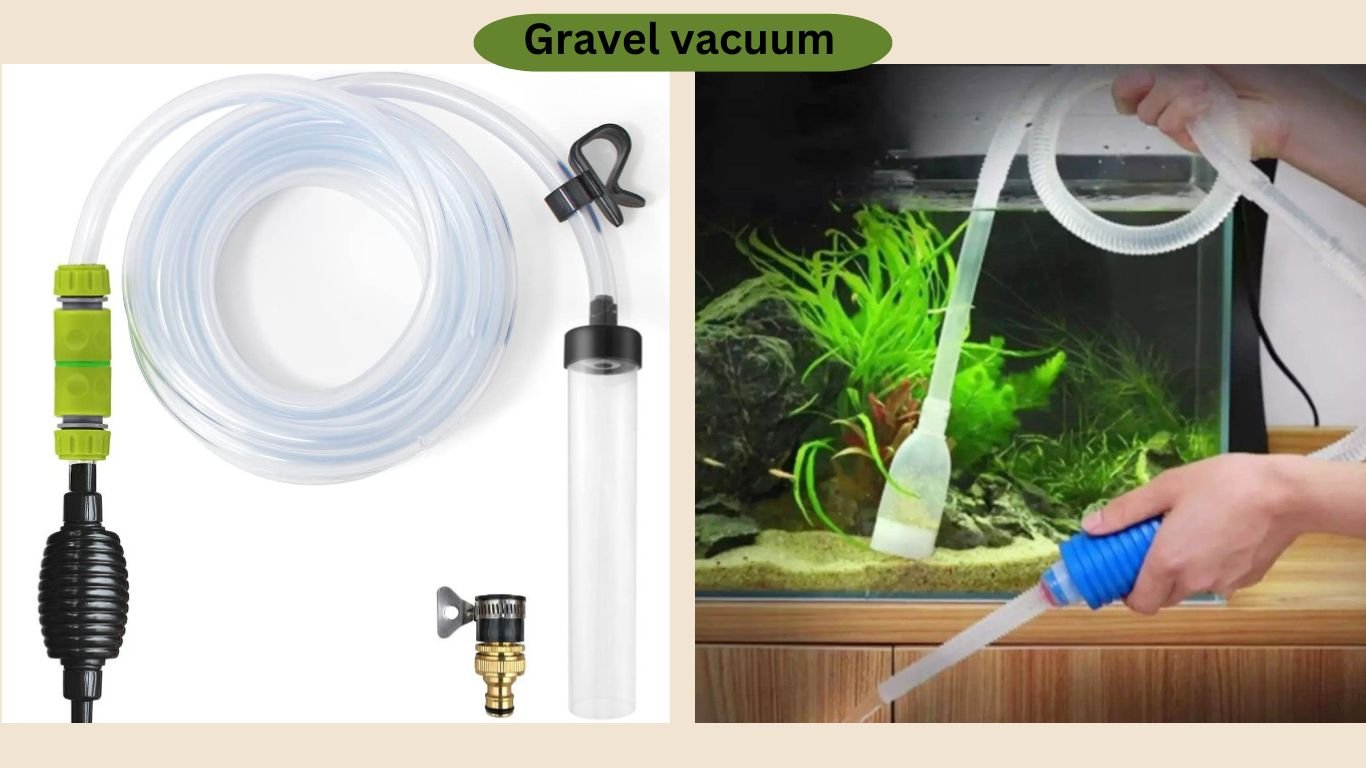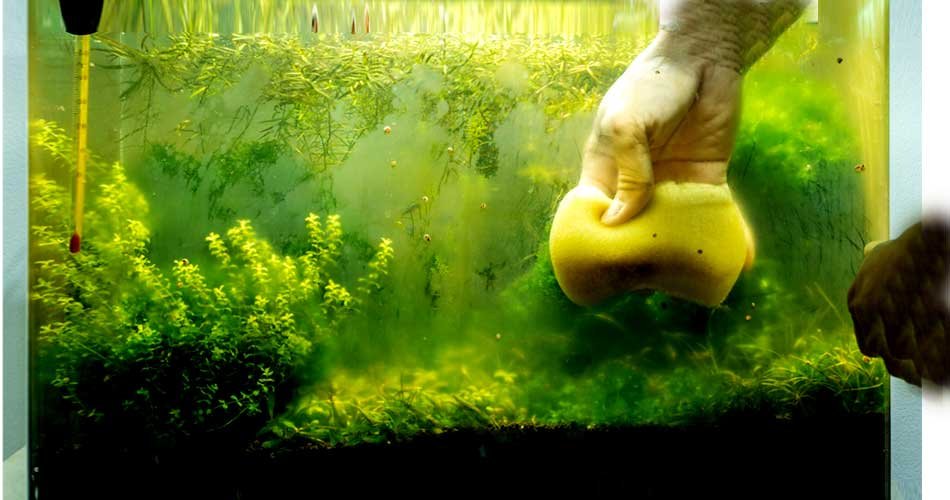How to remove brown algae from aquarium The best way
To remove brown algae from an aquarium, you need to address water quality and lighting. Regular cleaning and maintenance also help.
Brown algae can be a common nuisance in aquariums, especially for beginners. These tiny organisms thrive in low-light and nutrient-rich environments. If left unchecked, they can cover surfaces in your tank, making it look dirty and unhealthy. Understanding the causes of brown algae is the first step toward controlling it.
By adjusting your tank’s conditions and following a few simple steps, you can keep your aquarium clean and clear. Let’s dive into how you can effectively remove brown algae and maintain a healthy environment for your aquatic friends.
Identifying Brown Algae

Brown algae can be a common nuisance in aquariums, affecting the overall look and health of your underwater environment. Knowing how to identify brown algae is the first step toward effectively removing it. Let’s dive into the specifics of identifying brown algae.
Appearance And Texture
Brown algae, also known as diatoms, have a distinctive look. They often form a thin, brownish coating on the surfaces of your tank, including the glass, substrate, and decorations. This coating can sometimes look a bit slimy or dusty, depending on the amount present.
Touching brown algae might feel somewhat gritty or powdery. Unlike green algae, which can be more stringy or fuzzy, brown algae are usually more uniform and flat. Have you ever noticed a brown film on your aquarium walls that wipes away easily? That’s likely brown algae.
Common Causes
Brown algae thrive in low-light conditions. If your tank doesn’t get enough light, you may see a rapid increase in brown algae. Are your lights on a timer, or do you often forget to turn them on? This could be a contributing factor.
Excess silicates and phosphates in the water are another common cause. These substances often come from tap water or certain types of substrate. Have you tested your water recently? High levels of these nutrients can provide the perfect breeding ground for brown algae.
New tanks are particularly susceptible. If your aquarium is still cycling, brown algae may appear as the tank stabilizes. It’s a common issue that many new aquarium owners face. Did you just set up your tank? This could be why you’re seeing brown algae.
Identifying brown algae correctly can save you a lot of time and effort in cleaning and maintenance. Look closely at the appearance and texture of the algae and consider the common causes. Have you noticed these signs in your tank? If so, you’re on the right track to addressing the problem effectively.
Preventing Brown Algae

Brown algae can be a nuisance in aquariums, but prevention is the key to maintaining a healthy and beautiful tank. By focusing on water quality and proper lighting, you can significantly reduce the chances of brown algae taking over your aquatic paradise.
Water Quality Maintenance
Keeping your aquarium’s water clean and stable is crucial. Regularly test the water parameters like nitrate and phosphate levels. High levels can promote algae growth.
Consider using a good-quality filter. It helps remove debris and keeps the water circulating, preventing stagnant areas where algae thrive.
Perform weekly water changes. Replace 10-20% of the tank’s water to remove excess nutrients that brown algae love.
Proper Lighting
Lighting plays a big role in preventing brown algae. Ensure your aquarium has the right type and amount of light. Brown algae often appear in tanks with insufficient or incorrect lighting.
Aim for 8-10 hours of light per day. Using a timer can help maintain a consistent schedule.
Consider LED lights. They are energy-efficient and can be customized to suit the needs of your aquarium.
Have you noticed any brown algae in shaded areas of your tank? Adjusting the light intensity might help keep those spots algae-free.
Remember, a balanced approach to water quality and lighting can make a world of difference in keeping your aquarium free of brown algae.
Cleaning The Aquarium
Removing brown algae from your aquarium is essential for keeping your fish healthy. Regular cleaning prevents algae from taking over. You need to use the right techniques to ensure the algae is completely removed.
Manual Removal Techniques
Manual removal is the first step in cleaning your aquarium. Begin by scraping the algae from the glass. Use a gentle approach to avoid scratching the surface. Remove decorations and clean them separately. Rinse them well to ensure no algae remain.
For stubborn spots, use a soft brush. Scrub gently to avoid damaging your equipment. Ensure every corner is cleaned thoroughly. Manual removal helps to get rid of visible algae quickly.
Using Algae Scrapers
Algae scrapers are effective tools for cleaning your aquarium. Choose a scraper that is suitable for your tank size. Start by scraping the algae from the glass. Use steady, smooth motions for best results.
Scrapers come in different sizes and shapes. Some have long handles for reaching difficult areas. Make sure to clean the scraper after each use. This prevents the spread of algae spores.
Using algae scrapers regularly can keep your tank clear. It makes the cleaning process easier and more efficient.
Introducing Algae-eating Species
Introducing algae-eating species can help remove brown algae from an aquarium. Fish like Siamese algae eaters and snails can effectively control algae growth.
Having trouble with brown algae in your aquarium? Introducing algae-eating species can be a game-changer for keeping your tank clean. These helpful creatures not only add diversity to your aquarium but also naturally control the algae population. Let’s dive into some of the best options and how to ensure they fit well with your existing aquatic community.
Suitable Fish And Invertebrates
Certain fish and invertebrates are excellent at munching on brown algae. Otocinclus Catfish are small, peaceful, and efficient algae eaters. They’re great for smaller tanks and won’t harm other fish. Amano Shrimp is another fantastic choice.
These little guys are relentless workers and can make a noticeable difference in the algae levels. If you have a larger tank, consider adding Siamese Algae Eaters. They’re active and can cover a lot of ground, keeping the algae at bay.
Compatibility With Other Species
Before adding any new species, it’s crucial to consider their compatibility with your current tank inhabitants. Otocinclus Catfish are generally peaceful and get along well with most other fish. Amano Shrimp can cohabit with small to medium-sized fish. However, avoid keeping them with large, aggressive species that might see them as a snack.
Siamese Algae Eaters are usually compatible with a wide variety of fish but can sometimes be territorial. Ensure your tank has enough space and hiding spots to reduce potential conflicts. Have you tried any algae-eating species in your tank? What were your experiences? Share your thoughts and help others make informed choices.
Adjusting Feeding Practices
Adjust feeding practices to limit nutrients that promote brown algae growth. Avoid overfeeding and remove uneaten food quickly. This helps maintain cleaner water.
Adjusting feeding practices is essential when dealing with brown algae in your aquarium. By fine-tuning how you feed your fish, you can significantly reduce the nutrients that algae thrive on. Let’s dive into some practical tips for adjusting feeding practices.
Avoiding Overfeeding
Overfeeding is a common mistake that can lead to brown algae blooms. Uneaten food decomposes and releases nutrients that algae love. Feed your fish only what they can consume in 2-3 minutes. Remove any leftovers after this period. Consider feeding your fish smaller amounts more frequently. This minimizes waste and keeps the water cleaner.
Choosing The Right Food
The type of food you choose also impacts algae growth. Opt for high-quality, low-phosphate foods. Look for brands that list specific ingredients rather than fillers. This ensures your fish get the nutrition they need without excess waste. Experiment with different food types, such as flakes, pellets, or frozen food.
Observe which leaves the least residue in your tank. Remember, each fish species has unique dietary needs. Research what’s best for your aquarium inhabitants. Have you noticed any changes after adjusting your feeding practices? Share your experiences in the comments below!
Utilizing Chemical Treatments
When battling brown algae in your aquarium, utilizing chemical treatments can be an effective solution. These treatments can save time and effort, especially when the algae problem becomes overwhelming. However, knowing how to use these chemicals safely and understanding their potential risks is crucial for your tank’s health.
Safe Algaecides
Algaecides are chemicals specifically designed to kill algae. They can be a quick fix when brown algae start taking over. Make sure to choose an algaecide labeled safe for aquariums. This ensures that the chemical won’t harm your fish or plants.
When I first used an algaecide, I was surprised at how quickly it cleared up the brown algae. Within a few days, my tank looked pristine. It’s a convenient option if you’re dealing with a heavy infestation.
Follow the instructions on the product label meticulously. Overdosing can be harmful. Measure the dosage accurately and consider the size of your tank. Taking these precautions will help maintain a healthy balance in your aquarium.
Potential Risks
Chemical treatments can be a double-edged sword. While they effectively eliminate algae, they can also disrupt the tank’s ecosystem. Some algaecides might affect beneficial bacteria, which are crucial for breaking down waste in the aquarium.
Using chemicals as a quick fix can sometimes lead to a recurrence of algae. This happens because the root cause of the algae bloom, such as excess nutrients or improper lighting, isn’t addressed. Make sure to investigate and tackle these underlying issues.
Have you ever noticed your fish acting strangely after using an algaecide? This could indicate that the chemical is affecting them. Always observe your tank closely after treatment. If you see any signs of stress in your fish, perform a partial water change to dilute the chemical.
Utilizing chemical treatments for brown algae can be effective, but it’s essential to use them wisely. By choosing the right product and following the guidelines, you can keep your aquarium healthy and algae-free.
Regular Tank Maintenance
Regular tank maintenance is essential to keep your aquarium healthy and clear of brown algae. Consistent care helps maintain water quality and ensures a safe environment for your fish and plants. Let’s explore some key steps for effective regular tank maintenance.
Routine Water Changes

Changing the water in your aquarium regularly is crucial. Aim to replace 10-20% of the water weekly. This helps reduce nutrient build-up that fuels brown algae growth. Use a gravel vacuum to clean the substrate. This removes debris and uneaten food, further reducing nutrient levels. Always treat tap water with a dechlorinator before adding it to your tank. This protects your fish from harmful chemicals.
Filter Maintenance
Maintaining your filter is another important step. Check and clean the filter media every few weeks. Rinse it in tank water, not tap water, to preserve beneficial bacteria. Replace filter media as needed, based on the manufacturer’s recommendations. This ensures your filter works effectively to remove waste and excess nutrients. A clean filter helps maintain water clarity and reduces brown algae.
Monitoring Progress
Monitoring progress is crucial when removing brown algae from your aquarium. It ensures that your efforts are effective and helps you make necessary adjustments. Here’s how you can keep an eye on your tank’s health and algae situation.
Tracking Algae Growth
First, note the current state of algae in your tank. Take photos of your aquarium’s problem areas. This visual record will help you track changes over time.
Use a journal or a digital note-taking app to log your observations. Document the amount and location of algae. Record any changes in water parameters like nitrate and phosphate levels.
Are your algae levels decreasing? If yes, celebrate! If not, don’t worry. It’s a sign to tweak your strategies. Consistent tracking helps you see trends and patterns, making it easier to pinpoint what works.
Adjusting Strategies
If the algae persists, it’s time to adjust your methods. Are you overfeeding your fish? Excess food can fuel algae growth. Cut back a little and see if it helps.
Consider checking your lighting schedule. Too much light can encourage algae. Try reducing the light exposure by an hour or two.
Have you tried adding algae-eating fish or snails? They can be a natural solution to your problem. Ensure they suit your tank’s ecosystem and won’t create more issues.
By keeping a close eye on your progress and being willing to make adjustments, you’ll find the right balance to control brown algae in your aquarium. What strategies have you found most effective in your tank?
Frequently Asked Questions
How Do I Get Rid Of Brown Algae In My Fish Tank?
Remove brown algae by reducing light exposure. Clean the tank regularly and use an algae scraper. Introduce algae-eating fish or snails. Perform frequent water changes and maintain proper filtration. Avoid overfeeding fish.
Why Is The Algae In My Fish Tank Brown?
Brown algae in fish tanks usually indicate diatoms. They thrive in low light and silicate-rich water. Ensure proper tank maintenance and adequate lighting to reduce their growth.
How To Remove Brown Hair Algae From Aquarium?
Remove brown hair algae by reducing light exposure and feeding. Clean the tank regularly. Introduce algae-eating fish or shrimp. Increase water circulation and maintain proper filtration.
How Long Does It Take For Brown Algae To Go Away?
Brown algae usually disappear within 2-4 weeks. Regular cleaning and proper water conditions help speed up the process.
Conclusion
Removing brown algae from an aquarium is achievable with the right steps. Regular cleaning and proper lighting help. Maintaining good water quality is crucial. Adding algae-eating fish can also assist. Your aquarium will look clearer and healthier. Consistency is key in keeping algae at bay.
Enjoy your beautiful, algae-free tank!






